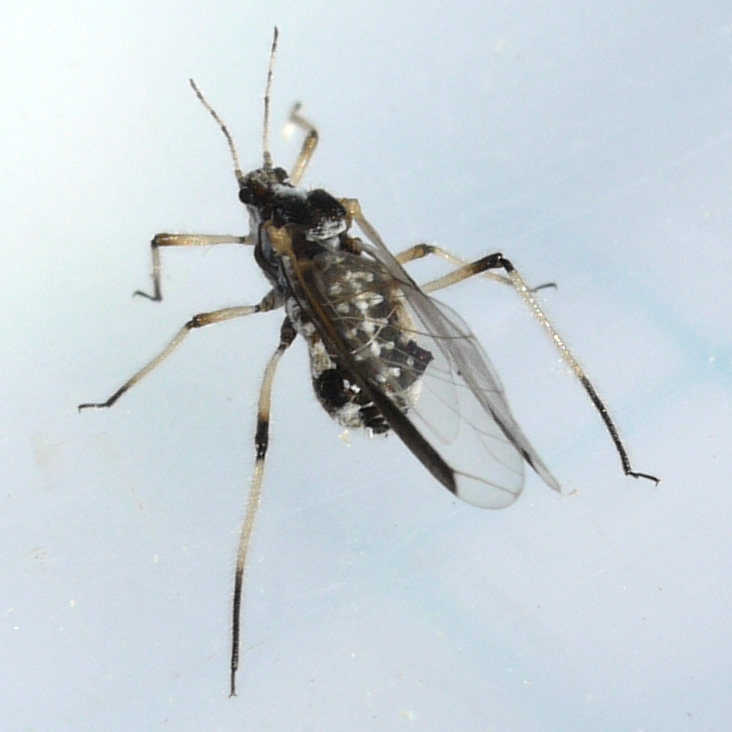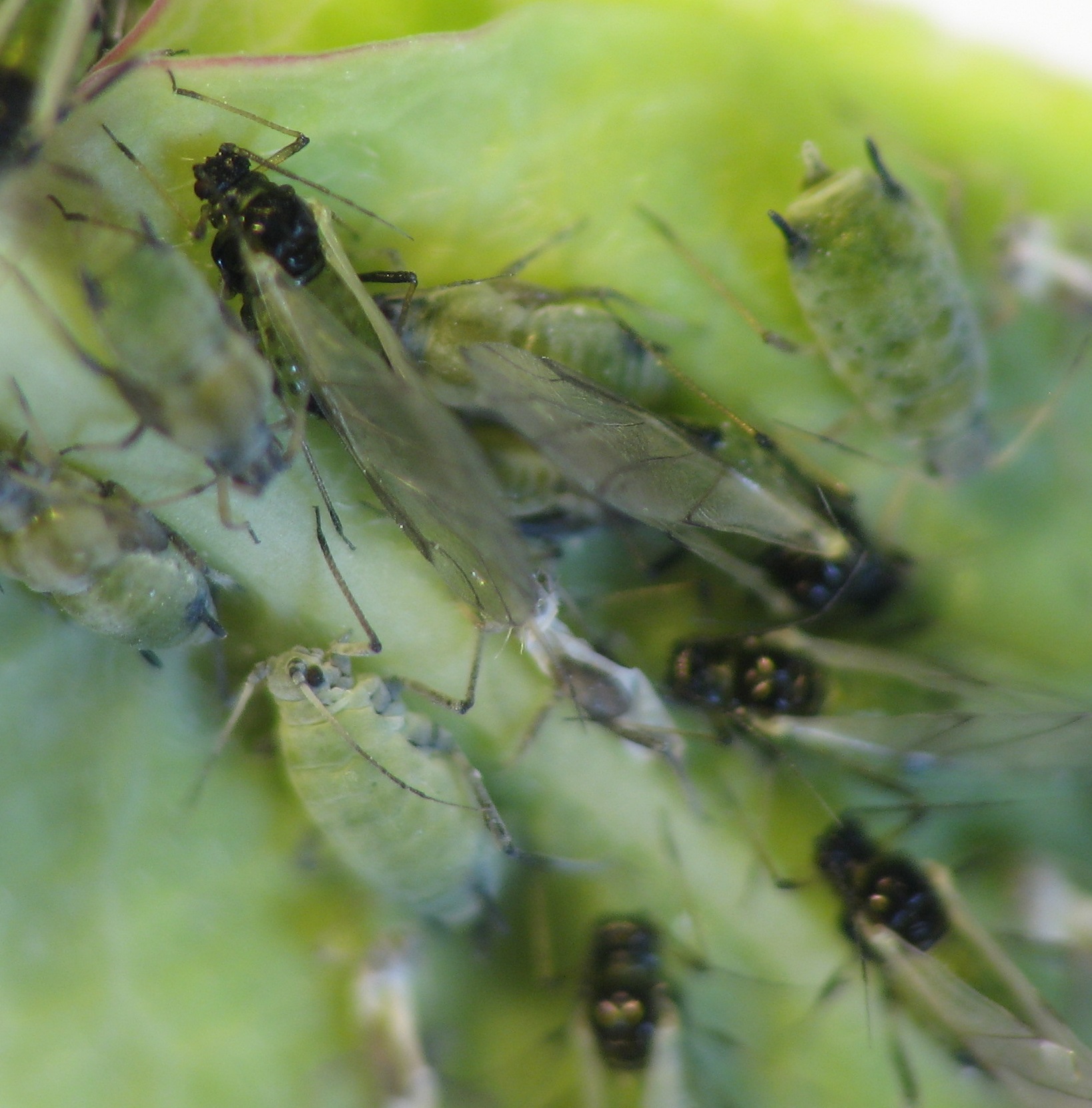|
Lachninae
Lachninae is a subfamily of the family Aphididae, containing some of the largest aphids, and they are sometimes referred to as "giant aphids". Members of this subfamily typically have greatly reduced cornicle The cornicle (or siphuncule) is one of a pair of small upright backward-pointing tubes found on the dorsal side of the 5th or 6th abdominal segments of aphids. They are sometimes mistaken for cerci. They are no more than pores in some species. ...s compared to other aphids, and the group has sometimes been classified as a separate family. Genera *'' Cinara'' Curtis, 1835 *'' Essigella'' Del Guercio, 1909 *'' Eulachnus'' Del Guercio, 1909 *'' Pseudessigella'' Hille Ris Lambers, 1966 *'' Schizolachnus'' Mordvilko, 1909 *'' Lachnus'' Burmeister, 1835 *'' Longistigma'' Wilson, 1909 *'' Maculolachnus'' *'' Neonippolachnus'' *'' Nippolachnus'' Matsumura, 1917 *'' Pterochloroides'' Mordvilko, 1914 *'' Pyrolachnus'' Basu & Hille Ris Lambers, 1968 *'' Sinolachnus'' Hille ... [...More Info...] [...Related Items...] OR: [Wikipedia] [Google] [Baidu] |
Lachninae
Lachninae is a subfamily of the family Aphididae, containing some of the largest aphids, and they are sometimes referred to as "giant aphids". Members of this subfamily typically have greatly reduced cornicle The cornicle (or siphuncule) is one of a pair of small upright backward-pointing tubes found on the dorsal side of the 5th or 6th abdominal segments of aphids. They are sometimes mistaken for cerci. They are no more than pores in some species. ...s compared to other aphids, and the group has sometimes been classified as a separate family. Genera *'' Cinara'' Curtis, 1835 *'' Essigella'' Del Guercio, 1909 *'' Eulachnus'' Del Guercio, 1909 *'' Pseudessigella'' Hille Ris Lambers, 1966 *'' Schizolachnus'' Mordvilko, 1909 *'' Lachnus'' Burmeister, 1835 *'' Longistigma'' Wilson, 1909 *'' Maculolachnus'' *'' Neonippolachnus'' *'' Nippolachnus'' Matsumura, 1917 *'' Pterochloroides'' Mordvilko, 1914 *'' Pyrolachnus'' Basu & Hille Ris Lambers, 1968 *'' Sinolachnus'' Hille ... [...More Info...] [...Related Items...] OR: [Wikipedia] [Google] [Baidu] |
Lachnus
''Lachnus'' is a genus of aphids and the name-bearing type genus of the subfamily Lachninae Lachninae is a subfamily of the family Aphididae, containing some of the largest aphids, and they are sometimes referred to as "giant aphids". Members of this subfamily typically have greatly reduced cornicle The cornicle (or siphuncule) is o .... It consists of about 20 species. References Further reading * * Taxa named by Hermann Burmeister Lachninae Sternorrhyncha genera {{Aphididae-stub ... [...More Info...] [...Related Items...] OR: [Wikipedia] [Google] [Baidu] |
Trama (genus)
''Trama'' is a genus of aphid Aphids are small sap-sucking insects and members of the superfamily Aphidoidea. Common names include greenfly and blackfly, although individuals within a species can vary widely in color. The group includes the fluffy white woolly aphids. A t ...s, in the order Hemiptera. They are noted for their lack of sexual reproduction. Species * ''Trama afghanica'' Narzikulov, 1973 * ''Trama antennata'' Mordvilko, 1935 * ''Trama baronii'' Hille Ris Lambers, 1969 * ''Trama bazarovi'' Narzikulov, 1966 * ''Trama caudata'' Del Guercio, 1909 * ''Trama centaureae'' Börner, 1940 * ''Trama eastopi'' Heinze, 1962 * ''Trama euphorbiae'' Juchnevitch & Kan, 1971 * ''Trama formicella'' Theobald, 1929 * ''Trama helianthemi'' Westwood 1843, originally ''Rhizobius helianthemi'' * ''Trama kulinitschae'' Narzikulov, 1969 * ''Trama maritima'' Eastop, 1953 * ''Trama mordwilkoi'' or ''Trama mordvilkoi'' Börner, 1940 * ''Trama muchinae'' Kan & Folk, 1986 * ''Trama narzykul ... [...More Info...] [...Related Items...] OR: [Wikipedia] [Google] [Baidu] |
Longistigma
''Longistigma'' is a genus of giant aphids in the family Aphididae. There are at least three described species in ''Longistigma''. Species These three species belong to the genus ''Longistigma'': * '' Longistigma caryae'' (Harris, T.W., 1841) (giant bark aphid) * '' Longistigma liquidambarus'' (Takahashi, R., 1925) * '' Longistigma xizangensis'' Zhang, Guangxue, 1981 c g Data sources: i = ITIS, c = Catalogue of Life, g = GBIF, b = Bugguide.net References Further reading * * * External links * Lachninae Sternorrhyncha genera {{Aphididae-stub ... [...More Info...] [...Related Items...] OR: [Wikipedia] [Google] [Baidu] |
Cinara
''Cinara'', the conifer aphids or giant conifer aphids, is a genus of aphids in the family Aphididae. They are widespread in the Northern Hemisphere. These aphids specialize on conifers in the pine and cypress families.Jousselin, E., et al. (2013)Is ecological speciation a major trend in aphids? Insights from a molecular phylogeny of the conifer-feeding genus ''Cinara''.''Frontiers in Zoology'' 10 56. Some species are pests that attack cultivated Christmas trees. The parasitoid wasp species in the genus '' Pauesia'' are specific to the genus. '' Cinara cedri'' has been shown to host three symbionts: ''Buchnera aphidicola'', a secondary symbiont, and bacteria in the genus ''Wolbachia''. There are about 243 species in this genus. Species include: * '' Cinara abietis'' * '' Cinara acutirostris'' * '' Cinara cedri'' * '' Cinara confinis'' * '' Cinara cupressi'' * '' Cinara fornacula'' * '' Cinara laricis'' * ''Cinara piceae ''Cinara'', the conifer aphids or giant conifer ... [...More Info...] [...Related Items...] OR: [Wikipedia] [Google] [Baidu] |
Cinara Strobi Eggs
''Cinara'', the conifer aphids or giant conifer aphids, is a genus of aphids in the family Aphididae. They are widespread in the Northern Hemisphere. These aphids specialize on conifers in the pine and cypress families.Jousselin, E., et al. (2013)Is ecological speciation a major trend in aphids? Insights from a molecular phylogeny of the conifer-feeding genus ''Cinara''.''Frontiers in Zoology'' 10 56. Some species are pests that attack cultivated Christmas trees. The parasitoid wasp species in the genus '' Pauesia'' are specific to the genus. '' Cinara cedri'' has been shown to host three symbionts: ''Buchnera aphidicola'', a secondary symbiont, and bacteria in the genus ''Wolbachia''. There are about 243 species in this genus. Species include: * '' Cinara abietis'' * '' Cinara acutirostris'' * '' Cinara cedri'' * '' Cinara confinis'' * '' Cinara cupressi'' * '' Cinara fornacula'' * '' Cinara laricis'' * ''Cinara piceae ''Cinara'', the conifer aphids or giant conifer ... [...More Info...] [...Related Items...] OR: [Wikipedia] [Google] [Baidu] |
Aphididae
The Aphididae are a very large insect family in the aphid superfamily ( Aphidoidea), of the order Hemiptera. These insects suck the sap from plant leaves. Several thousand species are placed in this family, many of which are considered plant/crop pests. They are the family of insects containing most plant virus vectors (around 200 known) with the green peach aphid ('' Myzus persicae'') being one of the most prevalent and indiscriminate carriers. Evolution Aphids originated in the late Cretaceous about (Mya), but the Aphidinae which comprises about half of the 4700 described species and genera of aphids alive today come from their most recent radiation which occurred in the late Tertiary less than 10 Mya.Von Dohlen CD, Moran NA (2000) Molecular data support a rapid radiation of aphids in the Cretaceous and multiple origins of host alternation. Biol J Linnean Soc 71: 689–717Von Dohlen CD, Rowe CA, Heie OE (2006) A test of morphological hypotheses for tribal and subtribal relatio ... [...More Info...] [...Related Items...] OR: [Wikipedia] [Google] [Baidu] |



